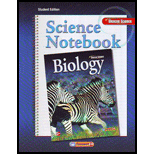
1
To compare:
The term atom, electron, neutron, nucleus, proton by defining them.
1
Explanation of Solution
Atoms are defined as the smallest particles of the elements and the building block of the matter. Atoms have a smaller particle called neutrons, protons, and electrons.
Nucleus is the central part of the atom and it consist of neutron and protons.
Proton is a positively charged particle of an atom.
Neutron is a particle of present in the nucleus, which does not have an electric charge.
Electron is a negatively charged particles. It is located outside of the nucleus.
2
To fill:
The given blanks with the given vocabulary terms.
2
Answer to Problem 1NV
The blanks can be filled as follows:
| Blank | Term |
| 1 | Element |
| 2 | Isotope |
| 3 | Compound |
| 4 | Covalent bond |
| 5 | Molecule |
| 6 | Ion |
| 7 | Ionic bond |
| 8 | Van der Wall force |
Explanation of Solution
An element is a Substance that cannot be broken down in other substance. An isotope it is a substance that have different atomic mass due to the difference in number of neutrons. A compound is a substance that is formed by
A bond in which electrons are shared for holding elements together is known as covalent bond. A molecule is a substance formed by covalent bonding. An ion is an atom that loses or gain an electron and carries a charge.
When two oppositely charged electrons are attracted toward each other and forms a bon then this bond is termed as ionic bond. The attraction between charged region of molecules takes place, this type of force is called van der Wall force.
Chapter 6 Solutions
Biology Science Notebook
Additional Science Textbook Solutions
Anatomy & Physiology (6th Edition)
Microbiology with Diseases by Body System (4th Edition)
Anatomy & Physiology
Biology: Life on Earth with Physiology (11th Edition)
Genetic Analysis: An Integrated Approach (3rd Edition)
Microbiology with Diseases by Body System (5th Edition)
 Human Anatomy & Physiology (11th Edition)BiologyISBN:9780134580999Author:Elaine N. Marieb, Katja N. HoehnPublisher:PEARSON
Human Anatomy & Physiology (11th Edition)BiologyISBN:9780134580999Author:Elaine N. Marieb, Katja N. HoehnPublisher:PEARSON Biology 2eBiologyISBN:9781947172517Author:Matthew Douglas, Jung Choi, Mary Ann ClarkPublisher:OpenStax
Biology 2eBiologyISBN:9781947172517Author:Matthew Douglas, Jung Choi, Mary Ann ClarkPublisher:OpenStax Anatomy & PhysiologyBiologyISBN:9781259398629Author:McKinley, Michael P., O'loughlin, Valerie Dean, Bidle, Theresa StouterPublisher:Mcgraw Hill Education,
Anatomy & PhysiologyBiologyISBN:9781259398629Author:McKinley, Michael P., O'loughlin, Valerie Dean, Bidle, Theresa StouterPublisher:Mcgraw Hill Education, Molecular Biology of the Cell (Sixth Edition)BiologyISBN:9780815344322Author:Bruce Alberts, Alexander D. Johnson, Julian Lewis, David Morgan, Martin Raff, Keith Roberts, Peter WalterPublisher:W. W. Norton & Company
Molecular Biology of the Cell (Sixth Edition)BiologyISBN:9780815344322Author:Bruce Alberts, Alexander D. Johnson, Julian Lewis, David Morgan, Martin Raff, Keith Roberts, Peter WalterPublisher:W. W. Norton & Company Laboratory Manual For Human Anatomy & PhysiologyBiologyISBN:9781260159363Author:Martin, Terry R., Prentice-craver, CynthiaPublisher:McGraw-Hill Publishing Co.
Laboratory Manual For Human Anatomy & PhysiologyBiologyISBN:9781260159363Author:Martin, Terry R., Prentice-craver, CynthiaPublisher:McGraw-Hill Publishing Co. Inquiry Into Life (16th Edition)BiologyISBN:9781260231700Author:Sylvia S. Mader, Michael WindelspechtPublisher:McGraw Hill Education
Inquiry Into Life (16th Edition)BiologyISBN:9781260231700Author:Sylvia S. Mader, Michael WindelspechtPublisher:McGraw Hill Education





